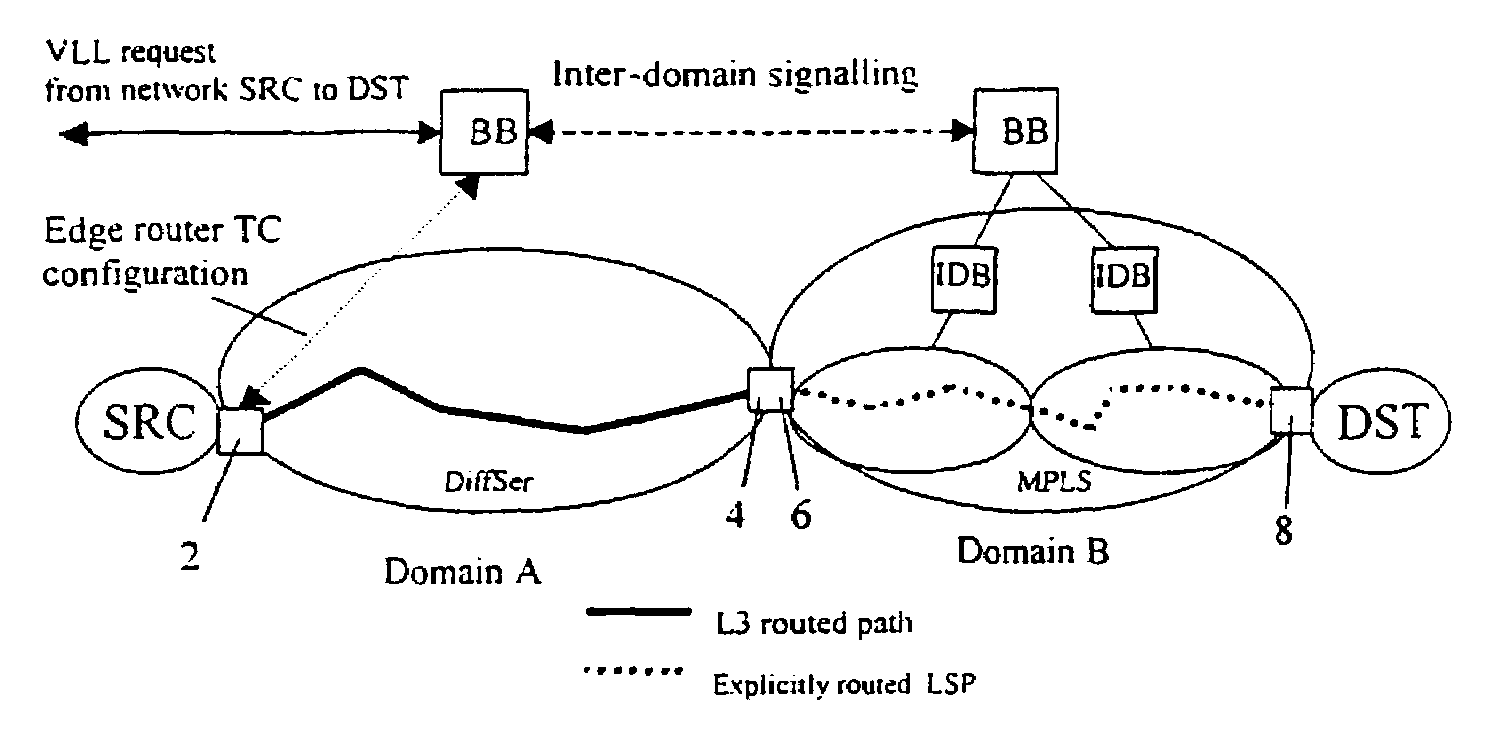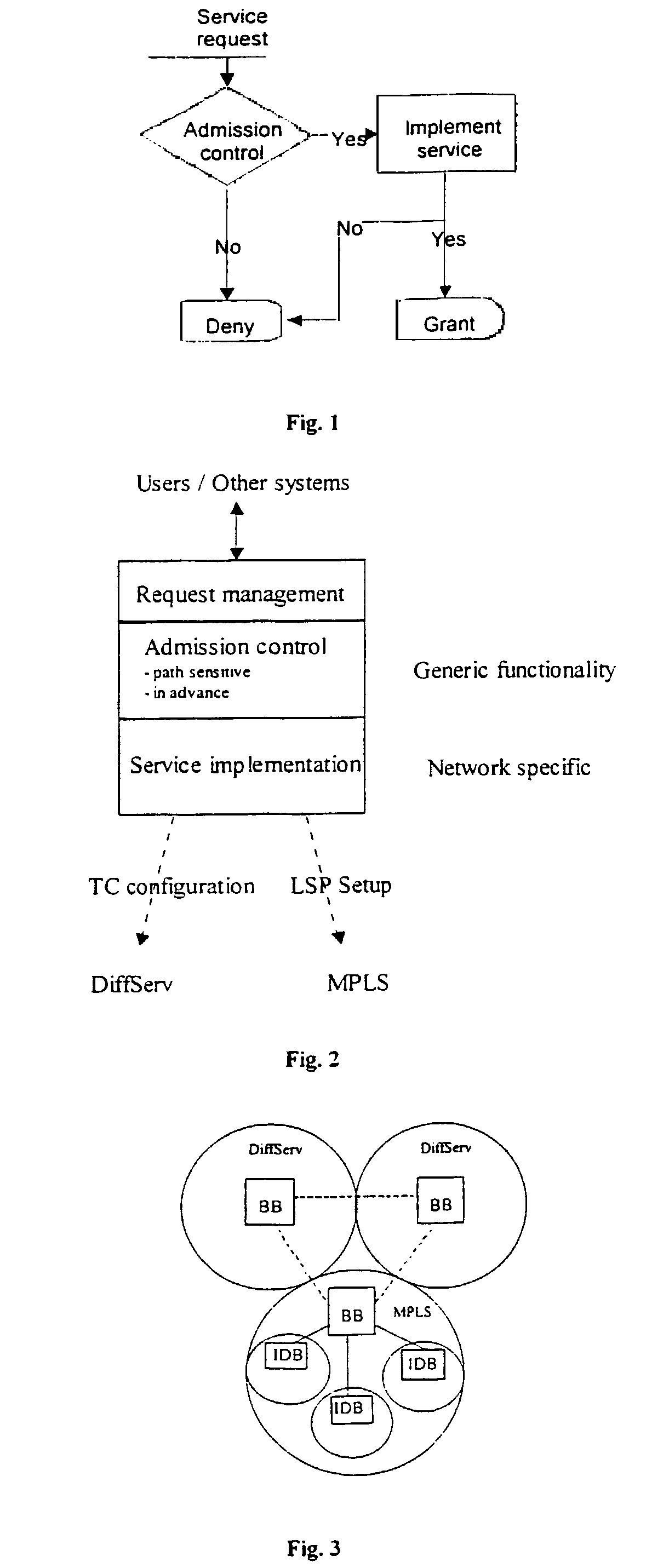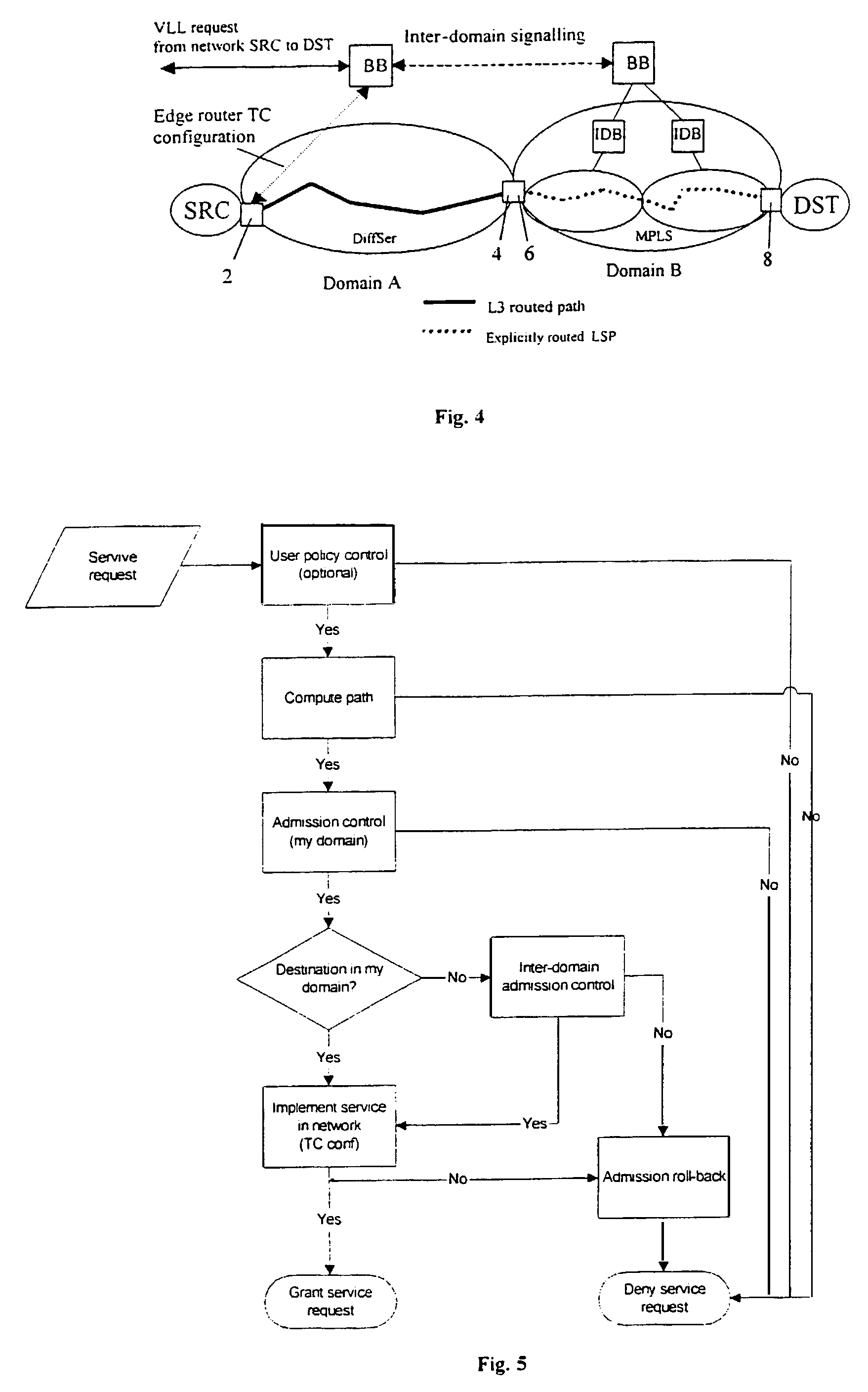Network optimisation method
a network optimization and network technology, applied in the field of packet-based communication networks, can solve problems such as insufficient, links on the shortest path between certain ingress-egress pairs may get congested, and not always make good use of available network resources
- Summary
- Abstract
- Description
- Claims
- Application Information
AI Technical Summary
Benefits of technology
Problems solved by technology
Method used
Image
Examples
Embodiment Construction
[0059]FIG. 2 shows functional blocks that schematically illustrate the present invention.
[0060]Note that the routing part of [RATES] is excluded and that the method according to the present invention relies entirely on existing routing and does not itself actively compute routes.
[0061]By referring to FIG. 2 the functionality of the present invention is schematically described below:[0062]Request management. This interface handles all incoming requests. Requests are made either by clients to the system (within the system's domain) or peering systems in other domains. This functionality of this interface can be either that of [RATES] or [OLOV] or both.[0063]Admission control. This block is implemented e.g. as described in [OLOV] to achieve path sensitivity and the ability to plan ahead of time. The same functionality is used for MPLS and DiffServ. The key components of this block are:[0064]Topology information, which is used to compute paths for the requests (path sensitivity).[0065]A...
PUM
 Login to View More
Login to View More Abstract
Description
Claims
Application Information
 Login to View More
Login to View More - R&D
- Intellectual Property
- Life Sciences
- Materials
- Tech Scout
- Unparalleled Data Quality
- Higher Quality Content
- 60% Fewer Hallucinations
Browse by: Latest US Patents, China's latest patents, Technical Efficacy Thesaurus, Application Domain, Technology Topic, Popular Technical Reports.
© 2025 PatSnap. All rights reserved.Legal|Privacy policy|Modern Slavery Act Transparency Statement|Sitemap|About US| Contact US: help@patsnap.com



